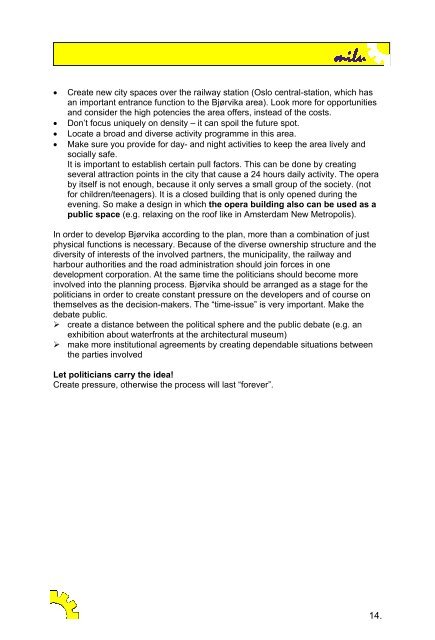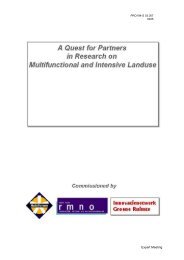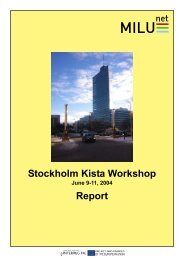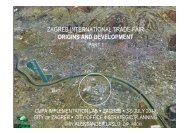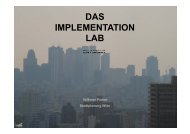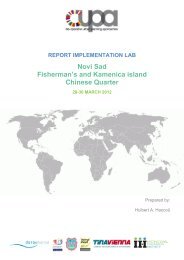2001-June 6-8 MILU - Iiinstitute.nl
2001-June 6-8 MILU - Iiinstitute.nl
2001-June 6-8 MILU - Iiinstitute.nl
Create successful ePaper yourself
Turn your PDF publications into a flip-book with our unique Google optimized e-Paper software.
• Create new city spaces over the railway station (Oslo central-station, which has<br />
an important entrance function to the Bjørvika area). Look more for opportunities<br />
and consider the high potencies the area offers, instead of the costs.<br />
• Don’t focus uniquely on density – it can spoil the future spot.<br />
• Locate a broad and diverse activity programme in this area.<br />
• Make sure you provide for day- and night activities to keep the area lively and<br />
socially safe.<br />
It is important to establish certain pull factors. This can be done by creating<br />
several attraction points in the city that cause a 24 hours daily activity. The opera<br />
by itself is not enough, because it o<strong>nl</strong>y serves a small group of the society. (not<br />
for children/teenagers). It is a closed building that is o<strong>nl</strong>y opened during the<br />
evening. So make a design in which the opera building also can be used as a<br />
public space (e.g. relaxing on the roof like in Amsterdam New Metropolis).<br />
In order to develop Bjørvika according to the plan, more than a combination of just<br />
physical functions is necessary. Because of the diverse ownership structure and the<br />
diversity of interests of the involved partners, the municipality, the railway and<br />
harbour authorities and the road administration should join forces in one<br />
development corporation. At the same time the politicians should become more<br />
involved into the planning process. Bjørvika should be arranged as a stage for the<br />
politicians in order to create constant pressure on the developers and of course on<br />
themselves as the decision-makers. The “time-issue” is very important. Make the<br />
debate public.<br />
‣ create a distance between the political sphere and the public debate (e.g. an<br />
exhibition about waterfronts at the architectural museum)<br />
‣ make more institutional agreements by creating dependable situations between<br />
the parties involved<br />
Let politicians carry the idea!<br />
Create pressure, otherwise the process will last “forever”.<br />
14.


